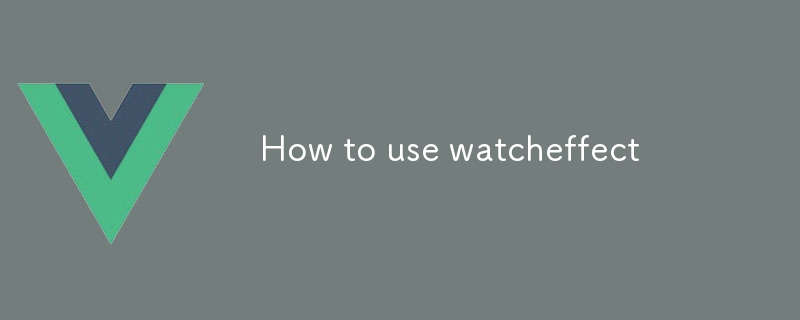
Detecting changes in Angular is essential for reactivity. Watcheffect hook in Angular allows you to monitor specific values or properties and react to changes. This article explains the syntax, usage, and performance implications of Watcheffect. It a

The Watcheffect in Angular is a hook that allows you to monitor changes in specific values or object properties. Its basic syntax is as follows:Watcheffect in Angular is a hook that allows you to monitor changes in specific values or object properties. Its basic syntax is as follows:
@Watcheffect(propertyName or parameterName)
effectCallback(changes: ObservableValue<any>) {}To detect changes in a reactive object using Watcheffect, you can use the ngOnChanges lifecycle hook. This hook provides an ngOnChanges property that contains an object with key-value pairs representing the previous and current values of the changed properties. For instance:
@Component(...)
class MyComponent {
@Watcheffect("myProperty")
ngOnChanges(changes: SimpleChanges) {
if (changes["myProperty"]) {
// Do something when the property changes
}
}
}Watcheffect uses zone.js to intercept property accesses and track changes. While it's an effective way to monitor changes, excessive use can lead to performance issues, especially with large objects or frequent property accesses. Consider using @Input and @Output properties or reactivity helpers like BehaviorSubject or ReplaySubject for better performance in most cases.
Watcheffect also allows you to create custom detectors for specific values or expressions. This can be useful when you need more granular control over what triggers a change detection. To create a custom detector, use the @DetectionStrategy property in the @Watcheffect decorator:
@Watcheffect('myExpression', { detectionStrategy: customDetection })
effectCallback(changes: ObservableValue<any>) {}In the example above, customDetectionrrreee
Watcheffect, you can use the ngOnChanges lifecycle hook. This hook provides an ngOnChanges property that contains an object with key-value pairs representing the previous and current values of the changed properties. For instance:🎜rrreee🎜Performance Implications🎜🎜Watcheffect uses zone.js to intercept property accesses and track changes. While it's an effective way to monitor changes, excessive use can lead to performance issues, especially with large objects or frequent property accesses. Consider using @Input and @Output properties or reactivity helpers like BehaviorSubject or ReplaySubject for better performance in most cases.🎜🎜Custom Detectors in Watcheffect🎜🎜Watcheffect also allows you to create custom detectors for specific values or expressions. This can be useful when you need more granular control over what triggers a change detection. To create a custom detector, use the @DetectionStrategy property in the @Watcheffect decorator:🎜rrreee🎜In the example above, customDetection is a function that takes the input value and returns a tuple of values representing the previous and current states.🎜The above is the detailed content of How to use watcheffect. For more information, please follow other related articles on the PHP Chinese website!
 What plugin is composer?
What plugin is composer?
 Can data between Hongmeng system and Android system be interoperable?
Can data between Hongmeng system and Android system be interoperable?
 How to open nrg file
How to open nrg file
 What does Matcha Exchange do?
What does Matcha Exchange do?
 How to use the datediff function
How to use the datediff function
 How to represent negative numbers in binary
How to represent negative numbers in binary
 oncontextmenu incident
oncontextmenu incident
 What keys do arrows refer to in computers?
What keys do arrows refer to in computers?
 WeChat Moments, two dashes and one dot
WeChat Moments, two dashes and one dot




